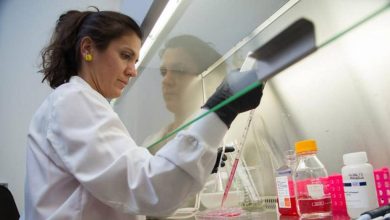Kiwikiu found in Nakula on Maui provides hope in ongoing effort to save species : Maui Now

[ad_1]

Nearly two years after conservationists believed all seven kiwikiu birds translocated to the Nakula Natural Area Reserve on Maui had died, a single honeycreeper from the group was located and confirmed to be alive.
Zach Pezzillo was with a group at Nakula on a tree-planting trip in July 2021 when he and a colleague suddenly heard the bird singing. “Both of us sat and listened. Sure enough, we heard it again, it was singing. I grabbed my binoculars and by looking at its leg bands I was able to confirm it was MAPA1, who hadn’t been seen in about two years and was believed to be dead.”
The species is on the verge of extinction, but the recent finding may provide important clues as to how MAPA1 has survived deadly avian malaria, when most birds exposed to the mosquito-borne disease perish.
In the fall of 2019, following the translocation of a group of seven wild kiwikiu from the Hanawī Natural Area Reserve on the northeast side of Haleakalā to the Nakula Natural Area Reserve on the southwest side, the bird dubbed MAPA1 was the only one left. All the rest died of malaria.
It was believed the higher elevation Nakula area would be free of mosquitoes, and in fact, surveys just before the birds’ releases showed that to be true. “Unfortunately, and very quickly, the accelerated pace of climate change and warmer temperatures brought the scourge of avian malaria to what was supposed to be their new home,” according to a news release issued by the state Department of Land and Natural Resources.
Fast forward to this fall’s field season when crews were back in Hanawī to again catch birds and learn more about disease prevalence in the area. Laura Berthold, avian field crew supervisor with the Maui Forest Bird Recovery Project said, “We were surprised when we started tracking a bird with the same leg band color combination of MAPA1. We weren’t sure if it was him or not because he had a combination where one color band was missing. There were at least three individuals he could have been.”
In early November, as the team set up mist nets on a ridge to catch birds, they caught MAPA1. “I was very, very excited and happy because we were finally going to figure out the mystery of this individual bird. It must have been quite a journey for him. Kiwikiu are small and they’re very good flyers but typically they spend their lives at one spot on the mountain. He must have had that homing mechanism to go back to where he was from to find a mate and reproduce,” Berthold said.
More good news, as before his capture, MAPA1 was seen with a female who did produce offspring this year. “He was doing his duty to his species and passing on his really strong genes, so that’s exciting that he’s back to his home and able to reproduce and continue his life,” Berthold commented.
Pezzillo, who has moved from the bird side of conservation to the plant side added, “We were surprised about where he was spotted and immediately wondered what that journey from one side of this massive mountain to the other would have been for him. Did he fly through Haleakalā Crater, or did he go around and stop in Manawainui or Kīpahulu and meet some friends on his way back to Hanawī. It would be cool to know how he did that.”
Researchers took a blood sample and conducted a health assessment on MAPA1 before releasing him back into his original home. Information from those tests could reveal what this bird has that the others didn’t, which resulted in him likely surviving avian malaria.
“There will be some answers to our questions when we get the blood test results back. It will confirm whether he did have malaria and is continuing to survive it. We have seen individual Hawaiian honeycreepers survive the disease. It’s just the majority of these individuals aren’t surviving, and that’s the problem,” Berthold concluded.
[ad_2]
Source: Maui News




